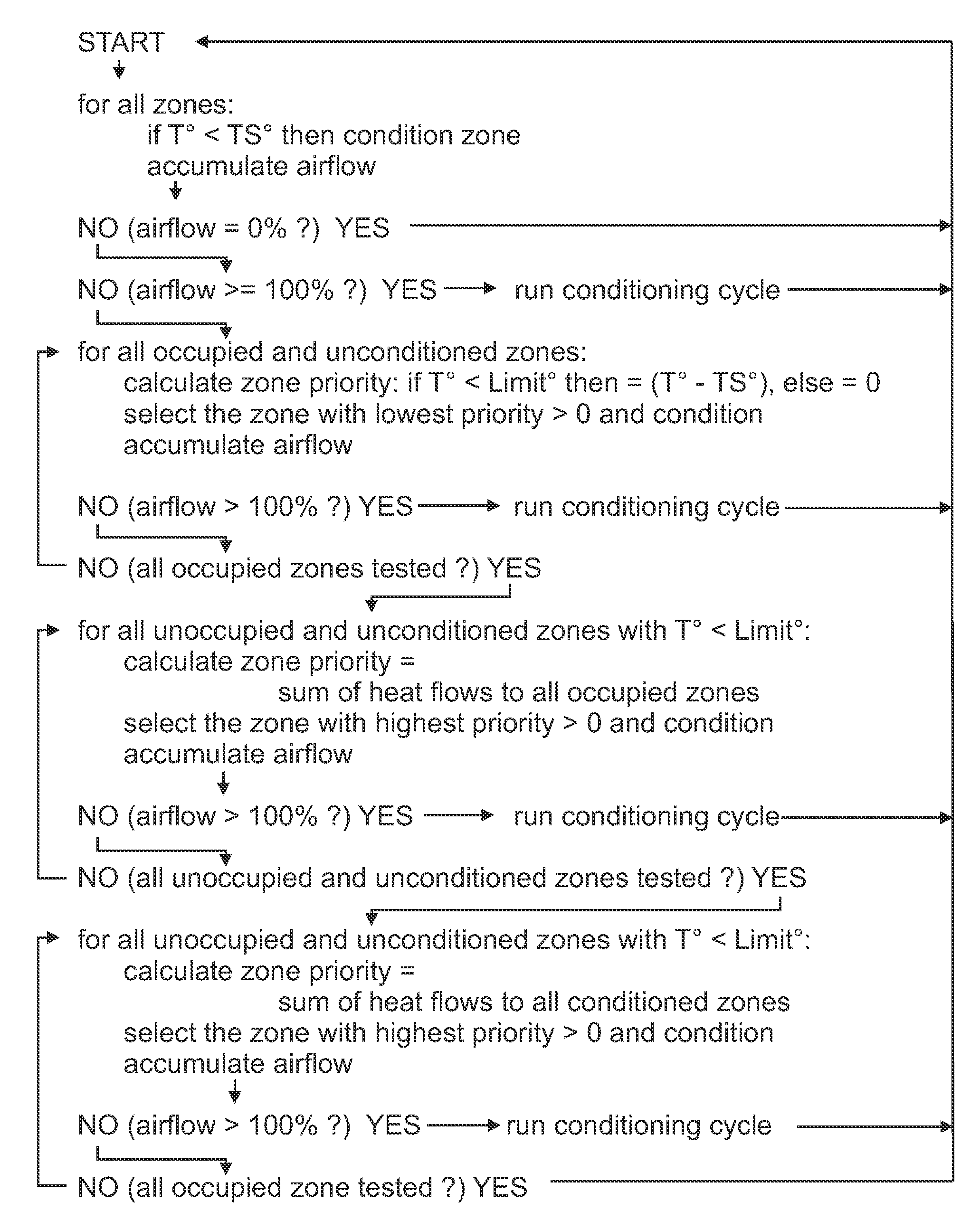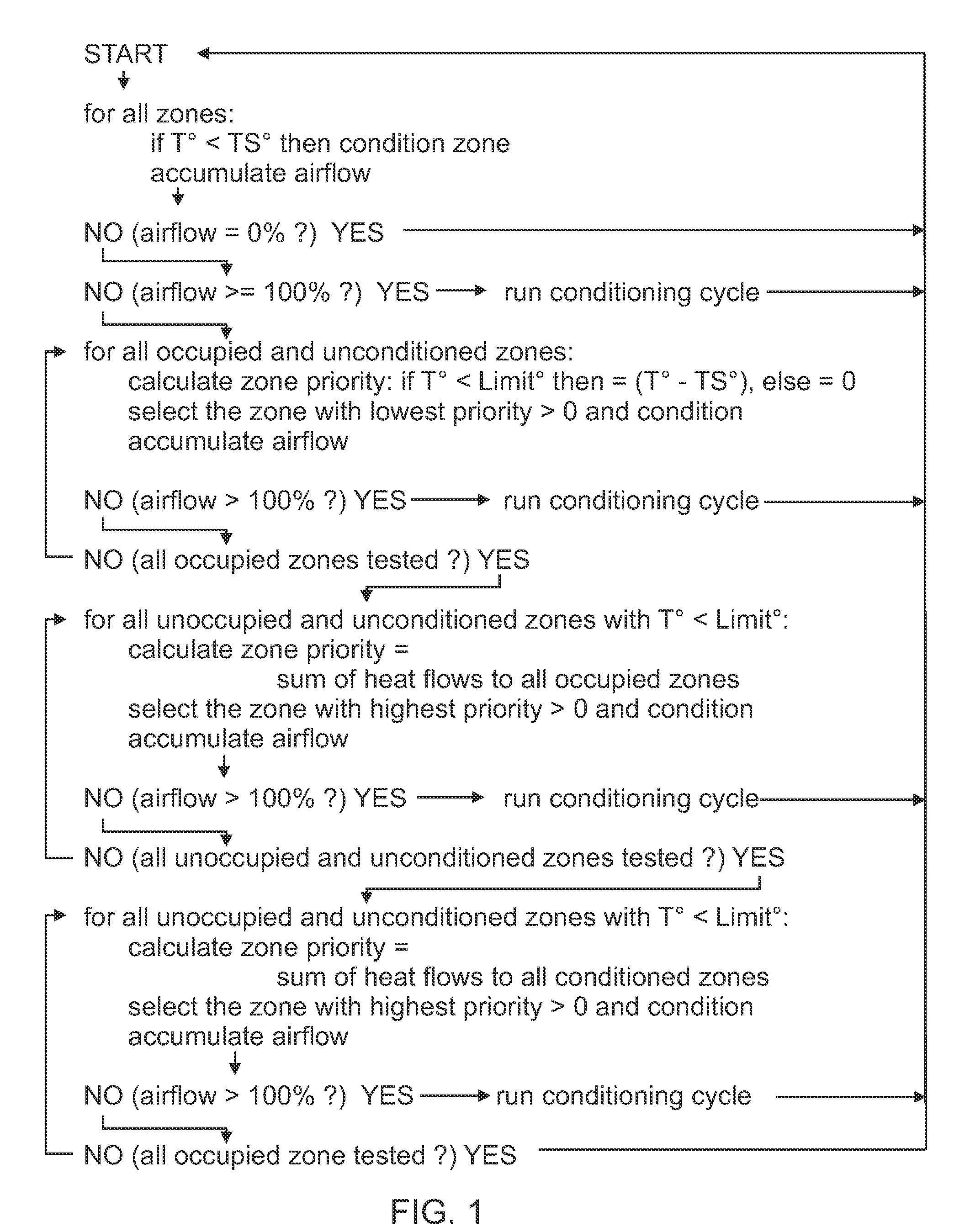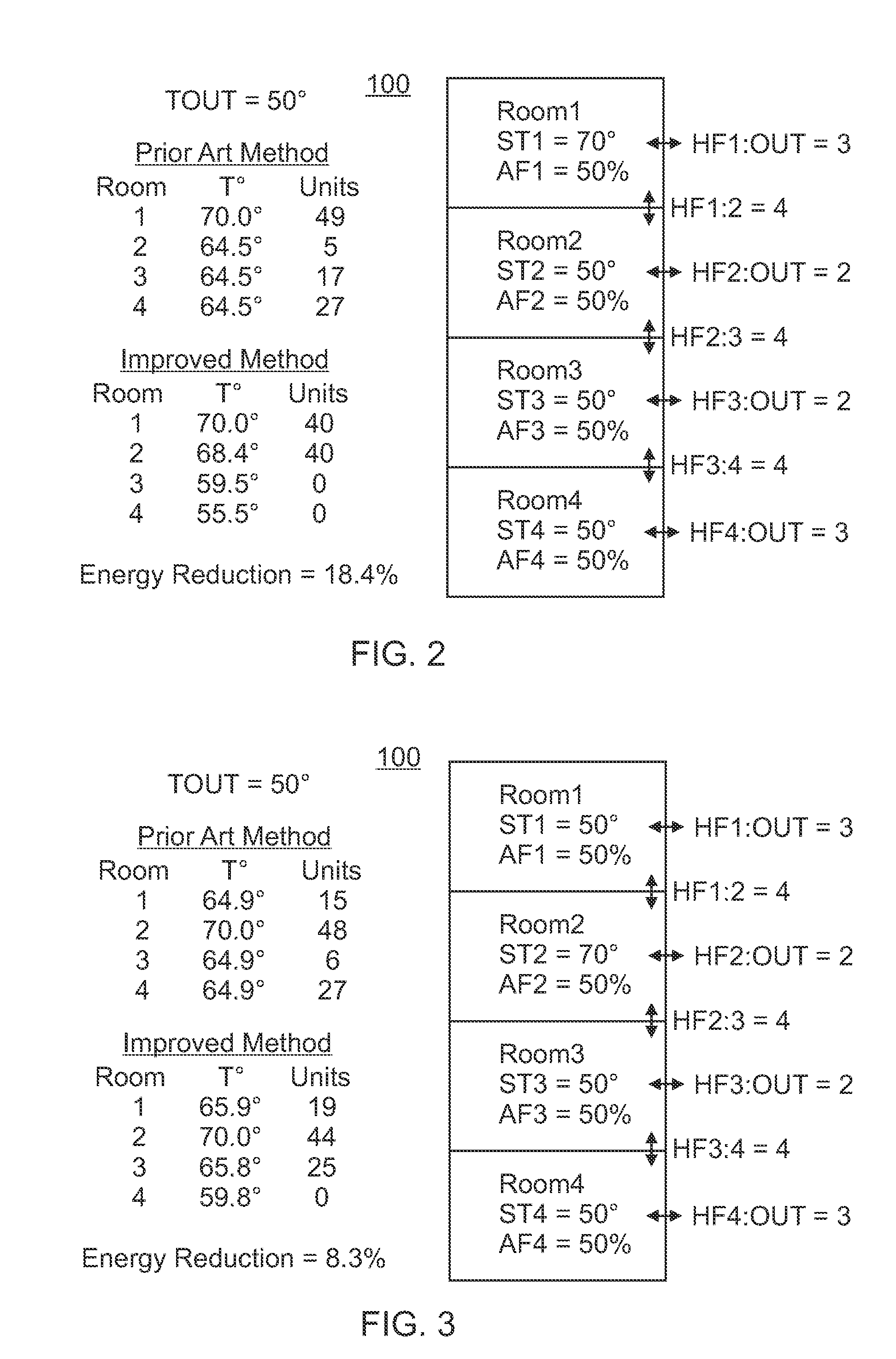Method for Controlling a Multi-Zone Forced Air HVAC System To Reduce Energy Use
- Summary
- Abstract
- Description
- Claims
- Application Information
AI Technical Summary
Benefits of technology
Problems solved by technology
Method used
Image
Examples
Embodiment Construction
[0029]FIG. 1 is a logic flow diagram of the improved method for selecting non-calling zones to receive excess conditioned airflow. The method makes decisions based on the occupancy of each zone. Each zone is either occupied or unoccupied so the total of the occupied zones and unoccupied zones equals the total number of zones in the HVAC system.
[0030]The set temperature of a zone can be used to determine its occupancy. For example if the heating set temperature is less than a preset heating threshold such as 55°, it is reasonable to assume the zone is unoccupied. Likewise if the cooling set temperature is greater than a preset cooling temperature such as 900, it is reasonable to assume the zone is unoccupied.
[0031]Other ways to determine occupancy can be used with the improved method. For example the temperature sensor for each zone can have a switch or button for communicating the occupied or unoccupied state to the zone control system. The occupant is responsible for setting the st...
PUM
 Login to View More
Login to View More Abstract
Description
Claims
Application Information
 Login to View More
Login to View More - R&D
- Intellectual Property
- Life Sciences
- Materials
- Tech Scout
- Unparalleled Data Quality
- Higher Quality Content
- 60% Fewer Hallucinations
Browse by: Latest US Patents, China's latest patents, Technical Efficacy Thesaurus, Application Domain, Technology Topic, Popular Technical Reports.
© 2025 PatSnap. All rights reserved.Legal|Privacy policy|Modern Slavery Act Transparency Statement|Sitemap|About US| Contact US: help@patsnap.com



